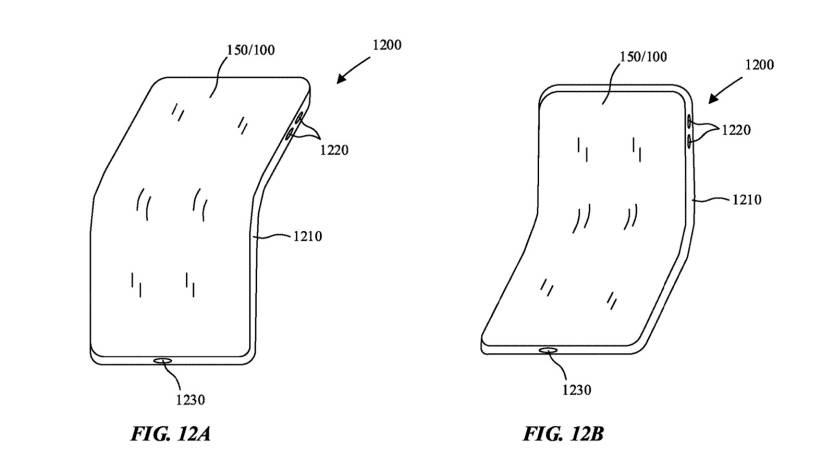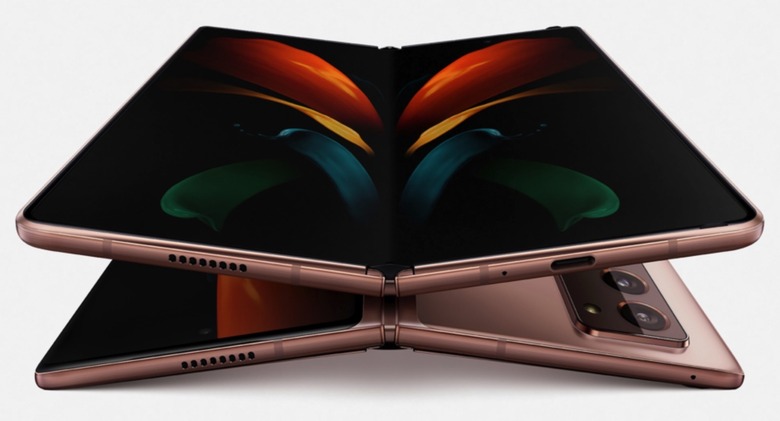Apple's New Invention Could Be A Game-Changer For The Foldable iPhone
Apple never comments on rumors and speculation about unannounced products, and it rarely unveils new devices before they're ready to launch. The foldable iPhone is one of those mysterious products that Apple is reportedly developing right now behind closed doors. But the foldable iPhone won't launch for at least a few more years because Apple needs to perfect a few key innovations before manufacturing the handset.
The main concern about foldable devices is still the screen, which is simultaneously the most exciting and most fragile component of a foldable phone. Apple will never do what Samsung did with the Galaxy Fold. The Korean giant launched the first-generation foldable without ensuring the handset can withstand real-life use. Early reviewers found not one but two separate defects, forcing Samsung to delay the launch by nearly six months so it could address those catastrophic design problems.
While Apple will not comment on rumors, there is one thing Apple can't protect, and that's the disclosure of the key innovations that could help it create its first foldable iPhones. One such discovery tells us that Apple is working on screen tech that would offer foldable devices much better protection against cracks.
Titled Hybrid coverlay/window structure for flexible display applications, patent application number 20210096595 was first seen by Patently Apple. Filed in mid-October 2020, the application is a continuation of previous patents describing technology that could prevent potential screen damage in foldable devices:
Embodiments describe display modules and protective cover layer structures. In particular, embodiments describe protective cover layer structures that may be implemented in curved, flexible, conformable and foldable display modules, and in particular with curved, flexible, conformable and foldable display panels. Various embodiments are described in which a hardcoat layer is applied to a transparent support substrate to form a protective cover layer structure. The hardcoat layer may be characterized as possessing a lower elastic modulus, higher elongation-to-break and optionally a lower hardness than the transparent support substrate. In one aspect, such a hybrid structure may prevent cracks from forming in the transparent support substrate. In another aspect, such a hybrid structure may move the neutral plane of protective cover layer so that the surfaces of the transparent support substrate see a lower strain upon bending.
The patent contains explicit imagery showing devices that fold both inwards and outwards, as well as gadgets that can look like Samsung's Galaxy Z Fold and Galaxy Z Flip devices. Apple is essentially covering all its bases, as it's unclear what type of foldable iPhone it will ultimately make. The company is reportedly testing both types of foldable designs.

From the patent: "Bending tests were performed until failure (crack propagation) of both test samples. The baseline sample of FIG. 4A resulted in a minimum radius of 3.05 mm at failure (crack propagation). As illustrated, the crack 420 formation and propagation initiated at a crack site 410. The test sample of FIG. 4B resulted in a minimum radius of 2.60 mm at failure. Crack 420 formation and propagation did not initiate at a crack site 410, and instead formed and propagated from a non-scratch site outside of the hardcoat layer 104 coating area. As demonstrated, the hardcoat layer 104 appears to have provided a higher level of durability, and protected the pre-existing crack sites 410 from propagating as well as the formation and propagation of new crack sites where the hardcoat layer 104 was formed."
The patent application covers new claims describing the cover layer that would sit atop the display to protect against cracks and crack propagation. Apple is looking at applying a protective layer that could include ceramic particles on top of a hard display cover made of glass and sapphire. The particle filler, including ceramic, would be dispersed in a polymer matrix that covers the screen.
A previous patent discovery showed that Apple is developing hinge technology that could provide support to a foldable screen while a phone is bring folded and unfolded. The hinge would allow the user to operate the phone in various modes.

From the patent: "FIG. 12A illustrates an outward bending application, while FIG. 12B illustrates an inward bending application. In an embodiment, the display panel 150 and protective cover layer 100 are capable of both outward and inward bending. In an embodiment, the protective cover layer 100 flexes with the flexible display panel 150 and includes a transparent support substrate 102 and a hardcoat layer 104 covering an exterior facing surface 103 of the transparent support substrate 102."
As always with the technology described in patents, there's no indication whether Apple will ever employ these innovations in a commercial product. But the increasing number of patents that have been surfacing indicate Apple is developing the tech required to mass-produce foldable devices that are even more sturdy than any foldable phone that is currently available.
